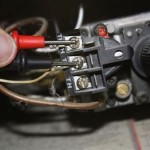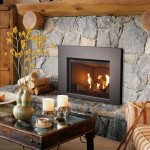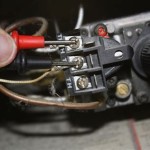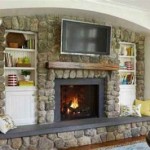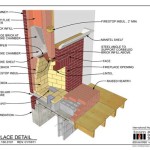DIY Fireplace Mantel Ideas to Transform Your Living Space
A fireplace often serves as the focal point of a living room, drawing attention and providing a cozy atmosphere. Enhancing the fireplace with a well-designed mantel can significantly elevate the room's aesthetics. While professionally installed mantels can be costly, creating one yourself offers a budget-friendly alternative and allows for personalization to perfectly match your style. This article explores various DIY fireplace mantel ideas, offering guidance and inspiration for transforming your fireplace into a stunning centerpiece.
Before embarking on any DIY project, it's crucial to assess the existing fireplace structure and surrounding area. Measure the dimensions of the fireplace, including the height, width, and depth. Consider the overall design and architecture of the room. A modern, minimalist room will benefit from a sleek, streamlined mantel, while a more rustic or traditional space might call for a mantel with a more substantial and textured appearance.
Safety is paramount when working with fireplaces. Ensure the mantel is installed at a safe distance from the firebox opening to prevent combustion or fire hazards. Consult local building codes and regulations regarding fireplace mantel installations. When using power tools, always wear appropriate safety gear such as eye protection and gloves.
Reclaimed Wood Mantel: Rustic Charm and Sustainable Style
Reclaimed wood mantels are a popular choice for adding character and warmth to a living space. The inherent imperfections, such as knots, grain patterns, and weathering, create a unique and rustic aesthetic. Reclaimed wood is also an environmentally friendly option, repurposing materials that would otherwise be discarded. Sources for reclaimed wood include architectural salvage yards, demolition sites, and online marketplaces. When selecting reclaimed wood, inspect it carefully for signs of rot, insect infestation, or structural damage. Clean the wood thoroughly with soap and water, and allow it to dry completely before starting the project.
To create a reclaimed wood mantel, first, determine the desired dimensions and cut the wood to the appropriate size. Consider the thickness of the wood and its weight-bearing capacity. For longer mantels, it may be necessary to reinforce the wood with internal supports or brackets. Smooth the surface of the wood with sandpaper, paying attention to any rough edges or splinters. The level of sanding will depend on the desired look. For a more rustic appearance, leave some of the imperfections intact. For a smoother finish, sand the wood more thoroughly.
Once the wood is prepared, apply a sealant or finish to protect it from moisture and wear. Options include polyurethane, varnish, or oil-based finishes. Choose a finish that complements the wood's natural color and grain. Allow the finish to dry completely before installing the mantel. Installation methods vary depending on the type of fireplace and the weight of the mantel. Common methods include using heavy-duty brackets, construction adhesive, or mortar. Ensure the mantel is securely attached to the fireplace structure to prevent it from falling.
Reclaimed wood mantels can be customized with various decorative elements. Add corbels or decorative brackets to enhance the mantel's visual appeal. Display antique tools, vintage photographs, or natural elements such as pinecones or branches to complete the rustic look. Remember to consider the weight of any decorative items placed on the mantel, and ensure the mantel can support the added weight.
Floating Mantel: Modern Minimalism and Clean Lines
Floating mantels offer a clean and contemporary aesthetic, making them ideal for modern or minimalist living spaces. These mantels appear to "float" on the wall without visible supports, creating a sleek and uncluttered look. Constructing a floating mantel requires careful planning and precise execution to ensure structural integrity.
The construction of a floating mantel typically involves creating a hollow box structure. This box is then attached to the wall using hidden supports, such as steel rods or mounting brackets. The exterior of the box can be made from various materials, including wood, MDF (medium-density fiberboard), or concrete. Wood is a popular choice for its natural warmth and versatility. MDF provides a smooth surface for painting or staining. Concrete offers a more industrial and modern look.
Begin by constructing the inner frame of the box. This frame provides the structural support for the mantel. Use sturdy lumber, such as 2x4s, and assemble the frame using screws or nails. Ensure the frame is square and level. Next, attach the exterior panels to the frame. Use construction adhesive and screws to secure the panels in place. Fill any gaps or imperfections with wood filler and sand smooth.
Installing the floating mantel requires careful attention to detail. Locate the wall studs behind the fireplace. These studs will provide the necessary support for the mantel. Attach mounting brackets or steel rods to the studs using lag screws. Ensure the brackets or rods are level and aligned. Slide the mantel over the brackets or rods, ensuring a snug fit. Secure the mantel to the brackets or rods with screws or adhesive.
Floating mantels can be finished with paint, stain, or a sealant. Choose a finish that complements the overall design of the room. Consider adding a decorative trim or molding to enhance the mantel's appearance. The minimalist design of floating mantels lends itself well to simple and understated decor. Consider displaying a few carefully selected art pieces or decorative objects to create a focal point without overwhelming the space.
Brick Mantel: Timeless Elegance and Classic Appeal
Brick mantels offer a timeless elegance and classic appeal, adding a touch of traditional charm to any living space. Brick is a durable and fire-resistant material, making it an ideal choice for a fireplace mantel. Creating a brick mantel can be a more involved project than some other DIY options, but the result is a substantial and visually striking addition to the fireplace.
There are several approaches to creating a brick mantel. One option is to construct a brick veneer over an existing mantel structure. This involves attaching thin brick slices to the surface of the existing mantel using mortar. Another option is to build a completely new mantel structure from brick. This requires more expertise in masonry and construction techniques.
If constructing a brick veneer, begin by preparing the existing mantel surface. Clean the surface thoroughly and remove any loose paint or debris. Apply a scratch coat of mortar to the surface to provide a bonding surface for the brick. Allow the scratch coat to dry completely. Next, apply a layer of mortar to the back of each brick slice and press it firmly onto the scratch coat. Use spacers to maintain consistent grout lines between the bricks. Once all the bricks are in place, allow the mortar to dry completely.
For a full brick mantel construction, a foundation is required. The foundation should be strong enough to support the weight of the brick. Lay the bricks in a staggered pattern, using mortar to bind them together. Ensure the mantel is level and plumb. Use a brick saw or chisel to cut bricks to fit around the firebox opening. Allow the mortar to dry completely before applying a sealant or finish. A brick sealant will help protect the brick from moisture and staining.
Brick mantels can be customized with various decorative elements. Consider adding a brick arch or corbels to enhance the mantel's visual appeal. Paint the brick for a more contemporary look, or leave it natural for a rustic feel. The textured surface of brick mantels provides a perfect backdrop for displaying a variety of decorative items, such as candles, vases, or artwork. Opt for items that complement the brick's color and texture for a cohesive aesthetic.
Concrete Mantel: Industrial Chic and Modern Edge
Concrete mantels bring an industrial chic and modern edge to a living space. Concrete's versatility allows for creating mantels in various shapes, sizes, and textures. This material has become increasingly popular for contemporary designs due to its raw and minimalist aesthetic. While it can be heavy and require significant structural support, the resulting mantel offers a unique and durable statement.
The process of creating a concrete mantel typically involves casting the concrete in a mold. The mold can be made from wood, melamine, or other durable materials. The mold should be carefully constructed to the desired dimensions and shape of the mantel. Before pouring the concrete, apply a release agent to the mold to prevent the concrete from sticking.
Mix the concrete according to the manufacturer's instructions. Consider adding pigments or aggregates to the concrete mix to achieve the desired color and texture. Pour the concrete into the mold, ensuring it fills all the corners and crevices. Use a vibrator or rubber mallet to remove any air bubbles from the concrete. Smooth the surface of the concrete with a trowel. Allow the concrete to cure completely according to the manufacturer's instructions. This may take several days or weeks, depending on the type of concrete used.
Once the concrete is cured, carefully remove it from the mold. Use sandpaper or a concrete grinder to smooth any rough edges or imperfections. Apply a sealant to protect the concrete from moisture and staining. Concrete sealants are available in various finishes, including matte, satin, and glossy. Installation of a concrete mantel requires careful planning and consideration of its weight. Use heavy-duty brackets or other structural supports to ensure the mantel is securely attached to the wall.
The industrial aesthetic of concrete mantels pairs well with minimalist decor and metal accents. Consider displaying geometric sculptures, metal candlesticks, or abstract artwork on the mantel. The clean lines and neutral color of concrete mantels provide a versatile backdrop for a variety of decorative styles.
These DIY fireplace mantel ideas offer a starting point for transforming a living space. The key to a successful project is careful planning, precise execution, and attention to detail. By considering the existing fireplace structure, the overall design of the room, and personal preferences, it's possible to create a unique and stunning fireplace mantel that enhances the room's aesthetics and adds a touch of personal style.

How To Make An Easy Diy Fireplace Mantel Sprucing Up Mamahood

19 Amazing Diy Fireplace Mantel Ideas To Inspire You

19 Amazing Diy Fireplace Mantel Ideas To Inspire You Home Mantle Decor

Diy Fireplace Mantel The Idea Room

15 Homey Diy Fireplace Mantels

Diy Fireplace Mantel The Idea Room

Diy Wood Beam Mantel Home Fireplace Remodel

Easy Diy Fireplace Mantel Tutorial Jessica Welling Interiors

36 Fireplace Decor Ideas Modern Mantel

A Fresh Fl Spring Mantel The Diy Mommy
Related Posts

